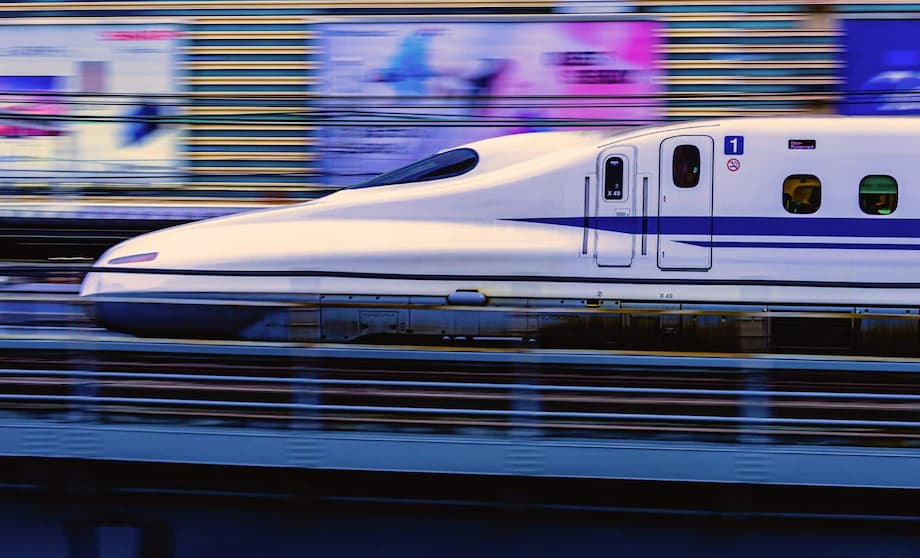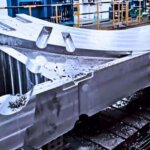China’s Maglev Revolution: Overcoming the Tunnel Boom Barrier
China has taken a dramatic leap forward in high-speed rail technology by solving one of the most persistent engineering challenges in the field: the deafening “tunnel boom” produced by magnetic levitation (maglev) trains at extreme speeds. This breakthrough not only paves the way for maglev trains to reach unprecedented velocities—potentially up to 1,000 kilometers per hour (about 620 mph)—but also positions China at the forefront of next-generation, sustainable transportation. The implications are vast, promising to transform intercity travel, reduce environmental impact, and set new global standards for rail innovation.
- China’s Maglev Revolution: Overcoming the Tunnel Boom Barrier
- What Is Tunnel Boom and Why Is It a Problem?
- China’s Silencer-Inspired Solution: How Does It Work?
- Why Maglev? The Promise and Potential of Magnetic Levitation Trains
- Global Context: How Does China’s Solution Compare?
- Challenges and Next Steps: From Prototype to Commercial Reality
- Broader Impacts: Redefining Intercity Travel and Sustainability
- In Summary
What Is Tunnel Boom and Why Is It a Problem?
When a high-speed train enters or exits a tunnel, it acts much like a piston, rapidly compressing the air in front of it. This compressed air is forced through the tunnel, and as the train bursts out, the pressure is released in a sudden, concussive blast known as “tunnel boom.” The effect is similar to a sonic boom produced by supersonic aircraft, but it occurs at much lower speeds for trains due to the confined space of the tunnel.
For conventional high-speed trains—like France’s TGV or Japan’s Shinkansen—tunnel boom is a known nuisance, but for maglev trains, which can travel at much higher speeds due to their frictionless levitation, the problem becomes far more severe. At speeds of 600 km/h (373 mph) and above, even relatively short tunnels (as little as 2 kilometers, or about 1.2 miles) can generate powerful shockwaves. These not only create deafening noise audible up to a mile away, but also risk damaging tunnel structures, disturbing wildlife, and reducing passenger comfort.
The Science Behind the Boom
The tunnel boom is essentially a low-frequency shockwave. As the train compresses air in the tunnel, the pressure builds up and is suddenly released at the tunnel’s exit. This rapid change in pressure is what causes the loud, disruptive noise and the physical stress on infrastructure. The faster the train, the more intense the effect. For maglev trains aiming to reach 1,000 km/h, the challenge is magnified, making a solution essential for commercial viability.
China’s Silencer-Inspired Solution: How Does It Work?
Chinese engineers, led by teams from the China Aerospace Science and Industry Corporation (CASIC) and Southwest Jiaotong University, have developed an innovative approach inspired by the mechanics of firearm silencers. The solution involves installing 100-meter-long (328-foot) porous buffers at the entrances and exits of tunnels, as well as applying porous coatings along the tunnel walls. These structures are made from lightweight, sound-absorbing materials designed to allow compressed air to escape gradually, rather than all at once.
This design dissipates the energy of the shockwave, reducing the intensity of the tunnel boom by up to 96%, according to laboratory simulations and scaled prototype tests. The buffers act much like a silencer on a gun, which slows and disperses high-pressure gases through internal chambers, lowering the volume of the blast. In the case of maglev tunnels, the porous buffers and coatings let air bleed away before the train exits, preventing the sudden pressure change that causes the boom.
Testing and Results
Large-scale trials conducted in Shanxi province in late 2024 saw a prototype maglev train reach near 1,000 km/h, with the buffers successfully controlling shockwaves without affecting train stability or speed. The technology was also tested on China’s latest maglev prototype, designed for sustained operation at 600 km/h, confirming its effectiveness in real-world conditions. The result: near-silent tunnel transits, improved passenger comfort, and reduced environmental disturbance.
Why Maglev? The Promise and Potential of Magnetic Levitation Trains
Maglev trains differ fundamentally from conventional high-speed rail. Instead of running on steel wheels over steel rails, maglev trains levitate a few millimeters above the track using powerful magnetic and electromagnetic forces. This eliminates friction, allowing for much higher speeds and smoother rides. The only significant resistance at high speeds is aerodynamic drag—hence the importance of solving issues like tunnel boom.
China’s maglev ambitions are bold. The country already operates the world’s fastest commercial maglev line—the Shanghai airport shuttle, which reaches 431 km/h (268 mph) over a 19-mile route. The new generation of maglev prototypes, such as the CRRC 600, are designed for 600 km/h (373 mph) and could, with further innovation, approach 1,000 km/h. These speeds would slash travel times between major cities, making rail competitive with air travel for distances up to 2,000 kilometers (about 1,240 miles).
Environmental and Economic Advantages
Maglev trains offer significant environmental benefits over short-haul flights. They produce lower carbon emissions, generate less noise pollution (especially with the new buffer technology), and cause less disruption to wildlife and communities near rail lines. The reduced wear and tear on infrastructure also translates to lower maintenance costs and longer service life for tunnels and tracks.
Global Context: How Does China’s Solution Compare?
High-speed rail is a global phenomenon, with over 20 countries operating networks that reach at least 200 km/h (124 mph). Japan pioneered the field with its Shinkansen bullet trains in the 1960s, and Europe followed with the TGV and other systems. Most high-speed rail lines use steel wheels, but maglev technology represents the next leap, offering even higher speeds and smoother rides.
Japan remains China’s main rival in maglev development. The Chuo Shinkansen, using superconducting maglev technology, is designed to connect Tokyo and Osaka at 505 km/h (314 mph) in just over an hour. However, delays and cost overruns have pushed back the project’s launch indefinitely, giving China an opportunity to seize the lead if it can scale up its new noise-control system quickly. South Korea and Germany have also developed maglev lines, though mostly for airport shuttles or demonstration projects.
International Implications
China’s tunnel boom solution could become a global standard if it proves durable and cost-effective in commercial service. Other countries developing high-speed rail or maglev systems may adopt similar technologies to overcome the same aerodynamic challenges. The innovation also enhances China’s position as an exporter of advanced rail technology, potentially influencing infrastructure projects worldwide.
Challenges and Next Steps: From Prototype to Commercial Reality
While the tunnel boom buffer is a major breakthrough, several challenges remain before maglev trains can become a widespread reality:
- Retrofitting Existing Tunnels: Upgrading current infrastructure with the new buffers may require significant investment, especially for long or heavily used tunnels.
- Durability and Maintenance: The porous materials must withstand extreme speeds, weather, and wear over time. Ongoing monitoring and maintenance will be essential.
- Cost and Scalability: While the buffer system is less expensive than building entirely new tunnels, large-scale deployment will still require substantial funding and coordination.
- Regulatory and Safety Standards: New technologies must meet rigorous safety and operational standards before being approved for commercial use.
Despite these hurdles, China’s government and provincial authorities are showing strong interest in pilot lines, and the success of large-scale trials has generated momentum for broader adoption. No specific routes have been officially approved yet, but the Beijing–Shanghai corridor is a leading candidate, with the potential to cut travel time from 4.5 hours to just 2.5 hours—matching domestic flight times but with far lower emissions and costs.
Broader Impacts: Redefining Intercity Travel and Sustainability
The successful elimination of tunnel boom could have transformative effects on how people travel between cities. By making ultra-fast, quiet maglev trains practical, China is offering a compelling alternative to short-haul flights, which are among the most carbon-intensive forms of transportation. This shift could help countries meet climate goals, reduce congestion at airports, and make travel more accessible and comfortable for millions.
Moreover, the technology’s environmental benefits extend beyond noise reduction. By minimizing structural stress on tunnels and reducing energy losses from aerodynamic drag, the buffer system supports longer-lasting infrastructure and lower operational costs. These advantages align with China’s broader green transportation goals and could serve as a model for sustainable mobility worldwide.
Expert Perspectives
Industry experts have hailed the tunnel boom buffer as a game-changer. As one engineer involved in the project explained:
“This is not just about making trains quieter. It’s about unlocking the full potential of maglev technology, making it viable for everyday travel, and setting a new benchmark for what high-speed rail can achieve.”
Others note that while the solution is promising, its long-term success will depend on real-world performance, maintenance, and integration with existing rail networks. The potential for AI-driven monitoring systems to track buffer performance and ensure safety adds another layer of innovation—and complexity—to the project.
In Summary
- China has developed a silencer-inspired buffer system that reduces maglev train tunnel boom by up to 96%, enabling speeds up to 1,000 km/h.
- The solution uses 100-meter-long porous buffers and tunnel wall coatings to dissipate compressed air, preventing disruptive shockwaves.
- This breakthrough addresses a major barrier to commercial maglev adoption, promising quieter, safer, and more environmentally friendly high-speed rail.
- China’s maglev trains could soon rival or surpass air travel for intercity routes, with lower emissions and costs.
- The technology positions China as a global leader in next-generation rail, with potential to influence transportation standards worldwide.
- Challenges remain in retrofitting infrastructure, ensuring durability, and scaling up deployment, but pilot projects are underway.
- By overcoming tunnel boom, China is bringing the vision of ultra-fast, sustainable maglev travel closer to reality.












